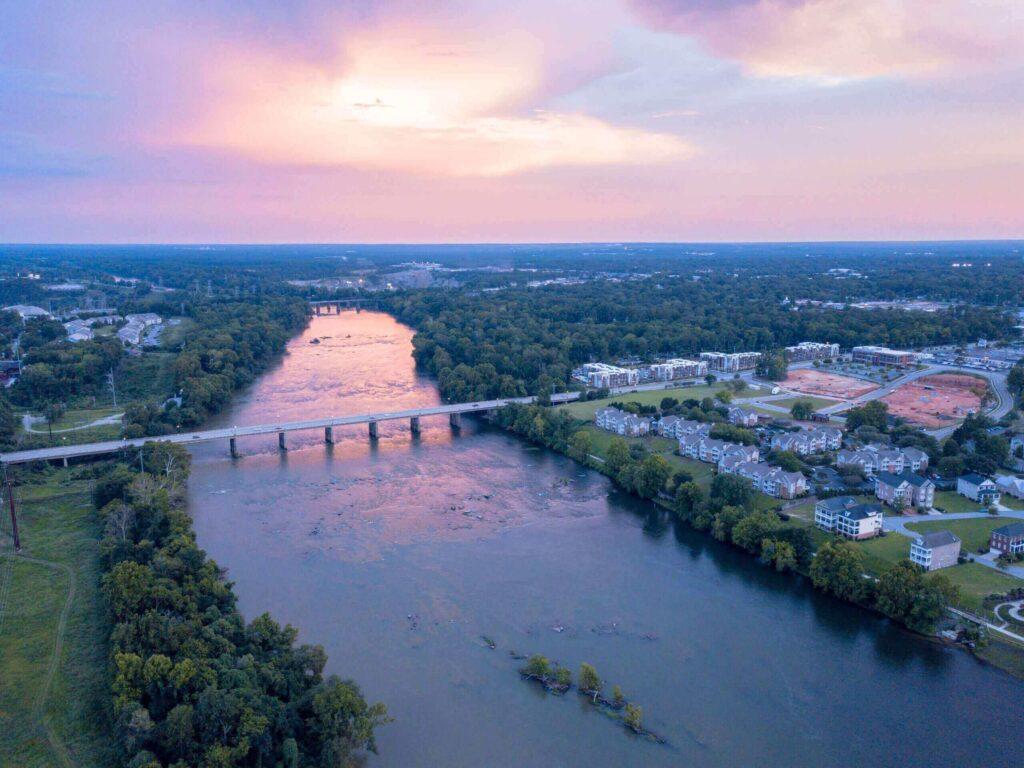
Spanning from the Atlantic coast to the Appalachian mountains, North and South Carolina share a unique geography. They also share similar flooding challenges.
Subsequent bouts of tropical storms, combined with storm surge, outline the dangers posed by high-intensity rainfall and flooding to the Carolinas. Last year Hurricane Ian triggered a state of emergency, as rainfall flooded homes, ripped up roads and piers, and impacted thousands of people.
Unfortunately, Ian wasn’t an anomaly. From Hurricanes Matthew and Florence in 2016 and 2018 to Tropical Storm Fred in 2021, the Carolinas are well-versed in the destruction of flooding — and the long, costly recoveries that accompany them.
With such impacts in mind, both North Carolina and South Carolina used their 2023 legislative sessions to adapt to stronger storms and more frequent flooding. Through their budget allocations this year, the two states invested tens of millions of new funding to boost flood resilience, while complementing previous resilience initiatives.
The American Flood Coalition was proud to provide input on both sessions to further advance transformative adaptation to flooding and sea level rise. We look forward to advising on how these funds are allocated as both states chart a sustainable and resilient path forward.
North Carolina
North Carolina’s 2023 budget will build off previous historic funding in risk assessment, planning, projects, and support. The American Flood Coalition pushed for this funding, which will help the state break out of the costly cycle of disaster spending.
New transportation resilience funds
The funding will provide $30 million for investments to boost resilience in transportation. This money will go toward projects like retrofitting roads, bridges and culverts to better withstand intense rainfall, as well as paving and improving drainage of roads along key evacuation routes.
Notably, the state legislature expanded the use and eligible applicants for these funds, so that more communities and entities can take advantage of them.
For example, the $30 million includes a matching component, meaning that state governments can match federal investments in transportation projects. With such a component, smaller, rural communities that otherwise could not afford such investments will have more of an opportunity to get approved federally funded projects.
Additionally, the state legislature opened these funds up to regional entities like Council of Governments (COGs) and Metropolitan Planning Organizations (MPOs). These entities approach flood resilience on a regional scale, working across city and county lines — important given that flooding ignores jurisdictional boundaries.
The American Flood Coalition was directly involved in these efforts, bringing together Raleigh COG leaders and MPO directors to help us advocate for a regional strategy on flood resilience.
Flood Resiliency Blueprint
The new budget complements previous resilience initiatives in North Carolina, including for the vision the state is undertaking through its Flood Resiliency Blueprint — another key priority for the American Flood Coalition.
The blueprint casts a long-term vision for the state’s flood resilience, by identifying and prioritizing projects for the state’s watersheds most affected by flooding, determining the flood risk of the most at-risk watersheds, and laying out a statewide plan for projects and funding accordingly.
While the blueprint carried out this vision over the course of the decade, this new investment will address needs in the interim by funding six full-time equivalent positions.
South Carolina
The big news out of South Carolina this year was its new Strategic Statewide Resilience and Risk Reduction Plan, which identifies major flood risks around the state and provides strategies for local governments to boost resilience and adapt to flooding and sea level rise.
The American Flood Coalition commends the South Carolina Office of Resilience (SCOR) for their leadership in developing this plan, which the legislature can build off of as soon as 2024.
State Resilience Plan
A key part of the state resilience plan is its approach to planning at watershed level. Because watersheds ignore jurisdictional boundaries and can span multiple communities, state governments are best positioned to organize large watershed-level approaches to flood planning. The American Flood Coalition offered key insights and guidance to SCOR as it developed this plan.
SCOR is currently hosting a number of statewide informational workshops to educate local leaders and officials on how they can benefit from the Statewide Resilience Plan.
Data coordination office
The South Carolina legislature dedicated $250,000 to determine the scope and value of a new data coordination office. The American Flood Coalition directly advocated for this office and will serve in an advisory role to the state as the office is shaped.
As the state assesses all data sources available for risk reduction, the office will provide the following benefits:
- Generate cost-savings by eliminating duplication of efforts related to data acquisition, modeling, and data management.
- Offer return on the state investment by better positioning the state and local governments to access competitive federal funding.
- Demonstrate best-in-class customer service to South Carolinians by serving as a central resource for data needs and technical assistance.
- Reduce project development costs and eliminate technical barriers for local governments by making flood risk data accessible for planning, project design and grant-writing.
Land conservation
Finally, the legislature dedicated $200 million for land conservation, which will be distributed by the South Carolina Office of Resilience. Governor Henry McMaster, who is also an AFC member, strongly advocated for this funding.
The funds will go toward wetland conservation, land buy-back programs, and land preservation, while also taking into account the flood-reduction benefits of such practices.
Resilient Carolinas
Representing both urban or rural, cities or farmland, inland or coastal, the Carolinas have a wide range of flooding challenges. But through proactive, forward-looking practices and programs, complemented by millions of dollars of funding, both North Carolina and South Carolina are better prepared for these risks.
The American Flood Coalition looks forward to working with both states as they carry out the progress made in these legislative sessions.
—
Credit for photo at top: Silver and Chalk Images/Getty






